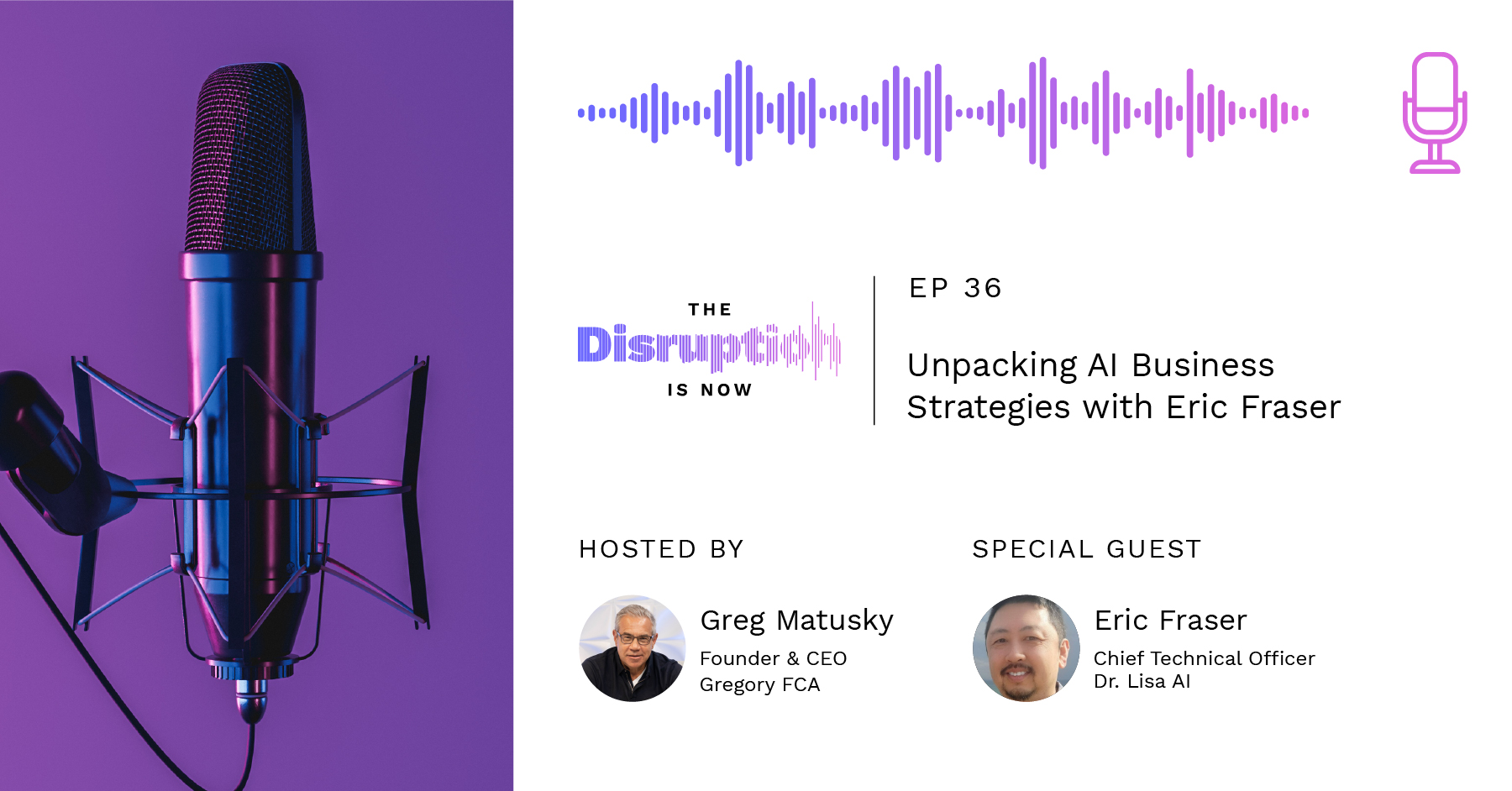AI often feels like a mystical black box, shrouded in complex jargon and technical obscurities. The companies that find real value in AI are the ones that strip away the mystique and focus on practical, everyday applications.
In a recent episode of The Disruption is Now, Eric Fraser, CTO of Dr. Lisa AI, joined host Greg Matusky to share his insights on how to make AI approachable and useful for businesses.
From boosting junior associates’ productivity to the ethical and technical challenges of AI advancement, Fraser sheds light on the real-world impact of AI and the hurdles that still lie ahead.
Watch now:
Key takeaways
AI’s mystical image hampers adoption
The portrayal of AI as a complex and mystical technology deters businesses from fully embracing it. Fraser advocates for demystifying AI by highlighting its end results and practical uses, rather than focusing on its technical complexities.
He uses examples such as AI’s ability to draft press releases to show that AI is not just a theoretical concept but a tool with tangible benefits.
Behavioral and cultural changes are key to adoption
To successfully implement AI, enterprises must undergo significant behavioral and cultural shifts. Fraser notes that many organizations are interested in AI but are held back by the daunting changes required to integrate it effectively.
AI adoption is not just about the technology itself but also about how people within the organization adapt to and accept these new tools.
AI empowers junior employees
AI tools can significantly improve the productivity of junior associates, allowing them to achieve average performance levels more quickly. For instance, AI can assist in drafting press releases, which are formulaic and abundant in training data, helping junior associates produce high-quality work.
This enhances overall efficiency but also underscores the continued importance of senior professionals who provide higher-level expertise and oversight of junior associates’ AI-assisted work.
Some challenges and concerns must be addressed
AI’s growth is limited by significant challenges, including power grid limitations, scarcity of raw materials for chips, and potential misuse by bad actors. Addressing these challenges requires ongoing innovation in energy efficiency, material usage, and adherence to ethical standards.
Key moments
- Purpose and mission of DrLisa.ai (2:54)
- How enterprises are reacting to AI (4:18)
- Better ways to introduce AI to employees (7:04)
- How to demystify AI (10:35)
- Empowering junior associates through AI tools (14:30)
- Where AI falls short (15:12)
- Who benefits most from AI (16:43)
- Eric’s definition and perspective on AGI (21:15)
- Threats to the future of AI (28:40)

